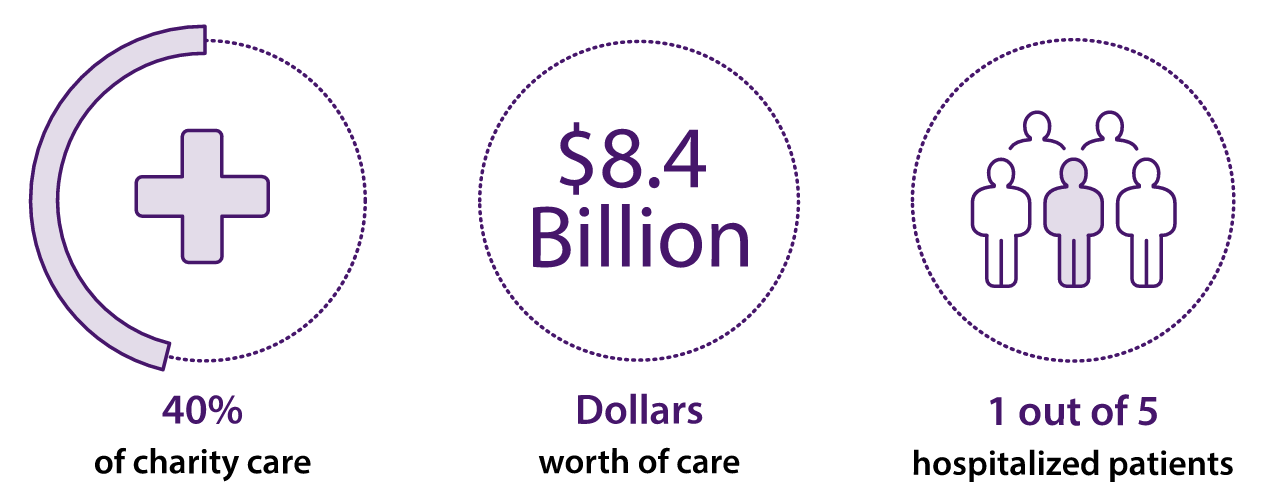The most powerful prescription? A well-trained physician.
For physicians, medical school is only the beginning. After graduation, physicians—now called residents—begin up to nine years of specialty training, or graduate medical education (GME). This training, required for licensure, is where pediatricians learn how to care for children and cardiologists learn how to treat patients with heart conditions. Funding for GME helps ensure enough residents learn to provide the care we need, when we need it.
Residents are helping to create the future of medicine.
Residents are at the cutting edge of innovative health care delivery, which includes a focus on team-based care, quality initiatives and patient safety.
Residents are serving the underserved.
Roughly 40% of all charity care in the U.S. is provided by teaching facilities where residents learn—that’s 8.4 billion dollars in care. Specifically, teaching hospitals deliver 20% of all hospital care, providing for seniors, veterans and patients in underserved communities. Residents also often stay and practice in the cities and towns where they trained, benefiting local communities.
Residents are finding cures for the future.
Residents receive clinical training at teaching hospitals that produce cutting-edge research. Advancements made in these facilities led to the first pediatric heart transplant and the first successful bone marrow transplant, to name a few.
What is the problem?
Despite the value of training physicians for our communities, Congress repeatedly considers cuts to GME. The current law put caps on the number of federally funded residency training positions, freezing the number available to that which existed in 1996. This lack of funding limits physician training, hindering access to care.
What’s wrong with this picture?
As the U.S. population ages, and as greater numbers of Americans suffer from multiple chronic conditions, we need more physicians to provide care. Yet, the Association of American Medical Colleges forecasts a physician shortage of between 40,800 and 104,900 by 2030 unless we increase the number of physicians trained: Congress can help by providing adequate GME funding.
Explore GME
See how inadequate funding for GME will limit your access to physicians and threaten the quality of your health care.



